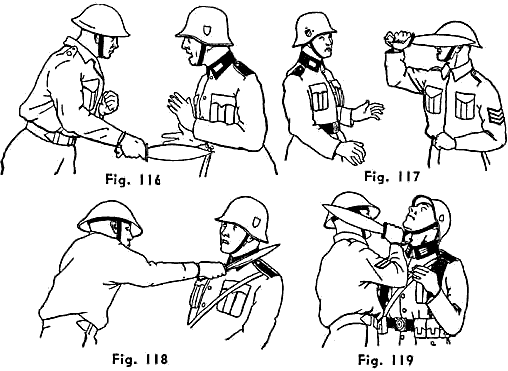I can tell you from my own research on this matter that Hand-to-hand combat is largely a myth. Does it take place? Yes, but so rarely that it is of no training or doctrinal importance. The vast majority of training associated with Hand-to-Hand is emotionally based and used to build confidence.
A great many modern accounts of so called hand-to-hand are usually over dramatised or even fabricated. Paddy Griffith's and Rory Muir's work show quite clearly that bayonet fighting (as opposed to charging) was very rare in both the Napoleonic and US Civil Wars.










 cant use the last one anymore...wouldn't want to violate anyones civil rights. If that didn't work it was usually spit in his face and kick him in the ba.......! The old Baton choke out was good too but you cant do that anymore either geez glad I am retired.
cant use the last one anymore...wouldn't want to violate anyones civil rights. If that didn't work it was usually spit in his face and kick him in the ba.......! The old Baton choke out was good too but you cant do that anymore either geez glad I am retired.



Bookmarks